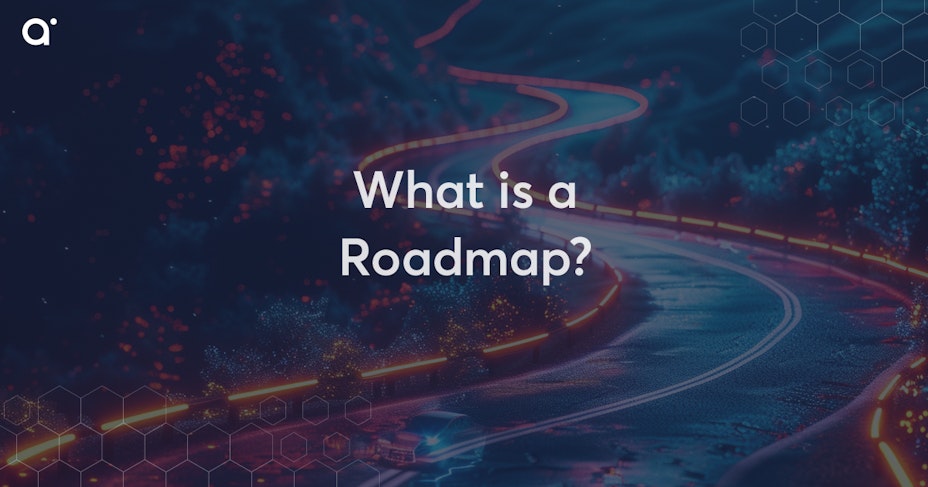What is a cryptocurrency roadmap
- 13 minute read

A cryptocurrency roadmap is a calendar, listing the strategic plans for the coming time that a blockchain wants to accomplish. The best roadmaps tell a credible story. A roadmap consists of short- and long-term plans that are attainable and important. Almost every idea on a roadmap comes directly from a discussion on a technical forum or social platforms.

- A roadmap shows the outside world that a blockchain is improving their technology
- Roadmaps are important for investors and users
- After the startup of a cryptocurrency project, typical irritations and minor problems will occur, which are noticed by the ecosystem and from there end up on the roadmap
- As the blockchain has been around longer, major upgrades may also end up on the roadmap that are essential to its popularity
- Developments in the outside world, such as AI, may force a blockchain to do something with this
- The roadmap is one of the first things you create when you launch a serious blockchain
- The roadmap is written together by all blockchain participants
- Those who create a roadmap can check this off from the best blockchains
- A good roadmap includes the blockchain's vision and mission, in addition to minor updates
- Milestones achieved and key numbers from the past and present are prominent presences on a strong roadmap
- Roadmaps should include short- and long-term plans so that attention will not wane
- Since a whitepaper is not read much, you can also put parts of it on the roadmap, which is read much more often
- Bitcoin fills the "roadmap" through Bitcoin Improvement Proposals, Ethereum has an established team and leader, Vitalik Buterin, and fills their roadmap with essential items that are fixed long in advance, in addition to items that come from their ecosystem
- Other top blockchains will all eventually have a roadmap, if they take themselves seriously
Content
- Why is there a roadmap?
- When do you create a roadmap?
- Who creates a roadmap?
- How do you set up a roadmap?
- What components does a roadmap have?
- What format has a roadmap?
- Major blockchains and their roadmap
- Conclusion
Why is there a roadmap?

A roadmap shows to the outside world that you are constantly working on making your blockchain better, thus attracting investor interest. It also allows users to raise issues they are experiencing while working with that blockchain, after which they can get on the roadmap.
On technical forums and on social media, discussions about aspects to a blockchain that people dislike or are dissatisfied with, such as transaction costs, speed or missing technology. If there is much need for a solution, then such an aspect may end up as a task on the roadmap.
You can think of it as a company just starting up and developing organically over time. Of course, you don't immediately have a top company on track that does everything right. In the beginning, much is amateurish in nature and many things go wrong. As the organization gets better and grows, other kinds of problems keep coming up. With companies you talk about a business plan, with blockchain technology you talk about a roadmap.
Logic of a roadmap
With a blockchain, developers initially run into typical beginner's bugs, but they are soon solved. As the blockchain becomes more professional, the problems are increasingly complex and precise. The blockchain ecosystem begins to grow with new users and more and more contributors are needed who are expected to eliminate problems from users and organizations.
If a problem is noticed and a solution is being worked on, it will be put on the roadmap with the better blockchains so that everyone knows it is being worked on. Sometimes things are also put on the roadmap that are so important that they are announced long in advance, such as setting up the main net or a change of Proof of Work to Proof of Stake . You might call this urging yourself to work hard to finish this upgrade on time.
Roadmap and the ecosystem

A roadmap increases the involvement of the outside world in a crypto project. One can then see not only what plans are in place, but also whether these goals will be achieved within the timeframe on the roadmap. If goals are not met, one can indicate on a roadmap why and what will be done about it.
A roadmap can also contain vital information for investors. For example, if it says that the number of coins in circulation will double on a certain date, holders can dump their coins before that. If it says that the main net will be launched soon this can be a reason to invest quickly because this is very good news. You know what they say then, "Buy the rumour, sell the news." Buy when good news are getting announced, sell when it is on the news.
Technical development in the cryptocurrency market

Developments in the outside world can also present a blockchain with serious problems, such as the quantum computer or AI . On your roadmap, you can then outline how you will address this new reality. This creates both opportunities and threats and separates the powerful blockchains from the less capable ones. Risk management should provide audits and preparation for things like regulations from authorities. Trends and developments at the competitor can prompt adjustments to the roadmap.
When do you create a roadmap?
Usually, you develop a cryptocurrency and its blockchain before you start a roadmap. The product has to be on the market first before you start proposing changes. There are blockchains that do have their entire roadmap "finished" before they go to market, but those are exceptions. The architecture of the blockchain will actually have to be fully deployed at launch.
After the cryptocurrency is launched, there will soon be minor and major irritations or outright problems. These all need to be resolved and these will largely define your roadmap.
Who creates a roadmap?

When a blockchain project is launched, developers have a certain vision and often a strategy. This group of engineers usually fills out the roadmap, so investors know what the plans and direction of the project are and whether it may be interesting to invest in the project's cryptocurrency early on after thorough research.
Other groups that co-write the roadmap are the individual project groups, such as the marketing group, finance, visionaries, ecosystem members, in short, any group that has an essential function in a project. Thus, together they try to show the outside world that their project is not sitting still and that they are working on an ever-improving product.
The ideas are usually brought up on a forum or other media, with users and technicians concerned about issues such as security, speed or transaction costs. By addressing these concerns, a roadmap organically follows, which developers get to work on. Collaboration from all stakeholders and adaptation to the market are key to successfully completing a roadmap.
How do you set up a roadmap?

After the initial phase of a cryptocurrency startup, it is very important to have a roadmap so that investors can see what your plans are for the shorter and longer term. This allows them to consider whether they want to invest in it or not. Without a roadmap, many potential early investors will drop out, making it difficult for your project to take off, partly due to lack of money. If you already have a roadmap for the startup, people may wonder why you didn't do these things before you launched the cryptocurrency.
Learn from successful blockchains
It can help if you study the roadmap of successful blockchain projects to see how they tackled things and how long it all took. Market research is also an essential factor in determining where the cryptocurrency market has strong needs. The target market should be clear.
A roadmap is not only an indication for investors, but also a guideline for a project's staff to work with. If a clear vision and mission speaks from a roadmap and each item refers directly to achieving or improving on that mission, developers can ensure that these components are finished, making it a professional company and increasing confidence with each milestone.
Unique selling points

On a roadmap, you can also state why you are unique and what you are all going to do to get even better. By far the most important reason for having a roadmap is to increase the confidence and prestige of your project, provided you complete all items on time. Furthermore, developers know exactly what they need to do in the coming time, so there is little noise.
Activate your ecosystem
It also helps if users and investors can contribute ideas to your roadmap, so you know what's going on in your ecosystem. You can then add the best of those to your roadmap, so developers can also work on things the outside world would like to see. That way you avoid the bubble of developers, who often want to put very technical things on it, while the customers don't understand any of that and want other things.
Asking stakeholders for their opinions
When new items on the roadmap are proposed, it is a good idea to submit these proposals for approval through some sort of improvement proposal, as with Bitcoin and Ethereum. You can of course let the developers vote on this, but usually a better idea is to let stakeholders vote, such as miners at Bitcoin or a DAO with governance token holders. That is the big difference from classic businesses, where the stakeholders (the customers) opinion are often not considered.
Vision and mission of a project

The vision of the project should be reflected in the roadmap, making the long-term goals clear, such as: We want to become the fastest blockchain with the lowest transaction costs.
The mission should also be clear, such as: We want to make cryptocurrency trading as easy and cheap as possible and help startups enter the market quickly. A catchy slogan can help with this, such as: "We are simple and cheap!" Hmm, maybe not the best example.
Marketing on a roadmap
It helps tremendously if you can name a competitive advantage or unique aspect on your roadmap. If you haven't built a faster, cheaper, more user-friendly or otherwise better blockchain than others, why would people want to invest in your project? Especially unique ideas that are not yet on the market can quickly lead to growth if the market is eager for it. For example, during the time of high transaction fees for Ethereum, the layer2 protocols sprung up like mushrooms to do something about that. There was a great need to bring down those transaction costs.
Milestones and key numbers on a roadmap

All milestones achieved should be reflected in chronological order as well as future ones. Progressive results may also have a prominent role in a roadmap. That way, you can track the development of the project and related statistics, such as number of users, total value locked, size of your ecosystem and core numbers like that.
A clear layout of the roadmap
The longer the project exists, you can start to make a classification on your roadmap. You start to subdivide into short-, medium- and long-term plans, working out the most important parts that are most in need as quickly as possible and listing the rest in order of importance and complexity. You can also break down major upgrades into feasible smaller short-term updates that add up to solving the larger problem. That way interested parties don't have to wait endlessly for that one big upgrade.
Usually quarterly plans work best, but they can also be shorter. If you don't hear from you for too long, attention can start to wane. If market conditions change you will also have to adjust the goals on your roadmap, as for example with new developments such as AI or quantum computers. The roadmap must always be flexible.
Some of these items are usually also in the whitepaper , but it is read much less than a roadmap, because a white paper is too technical in nature and too comprehensive for most investors.
What components does a roadmap have?

A roadmap has set components that reflect both the past and the future:
- The most important part of the roadmap is the vision and mission of a blockchain.
- Important milestones and key numbers from the past are normally still displayed in date order.
- For the foreseeable future, small and larger updates that are planned are displayed in a kind of calendar.
- Major upgrades in the future are displayed, even if this may take longer, such as a main net rollout or a change to essential protocols.
- Goals should be clearly defined so that everyone knows what is being worked on and whether they have been achieved.
- Information for each update or upgrade is communicated so that investors and users can see which ones are on the roll, how important they are, and what problem they solve.
- Technical challenges, such as the introduction of AI, quantum computing or increasing scalability.
- Information about tokenomics, such as when locked-in cryptos from the team or investors are released or when the supply is increased or decreased.
- He provides information on where to suggest improvements, such as forums and other media, to create an engaged community.
- A good roadmap tells a story about where you've come from and where you're going. The best investors use this to determine whether to join. A roadmap can make a cryptocurrency a success.
What format has a roadmap?
- The most common is in the form of a timeline. A blockchain project then indicates the date by which an item must be finished and which are already finished.
- Some blockchain projects use a progress bar to show what portion is already finished in percentage.
- There are also blockchain projects that work with tables that can be very detailed.
Major blockchains and their roadmap
Blockchains that have a roadmap can be tracked much more easily by interested parties, allowing them to make informed decisions based on this information.
Bitcoin Improvement Proposals

The world's most popular blockchain by market cap, Bitcoin, doesn't even have a roadmap. Of course, that's surprising on one hand, but when you know they don't have a permanent team either.
With Bitcoin, changes do not come from an official roadmap, but from Bitcoin Improvement Proposals . These proposals come from developers or users, with Bitcoin miners getting to decide whether to implement them, since they have the highest stakes in each proposal.
Ethereum roadmap

Ethereum does have an established team and a leader, Vitalik Buterin. This strong blockchain has a clear vision and mission and listens very carefully to the issues facing users and Ethereum's ecosystem. Decentralized applications and smart contracts have a prominent place in their ecosystem. They work there daily to solve these problems and put them on their roadmap. No wonder this tech supercoin is so popular.
Over time, I believe Ethereum will start to solve as many problems as possible from both their blockchain and others. Important things like bringing down transaction costs, faster transactions and a more secure protocol are high on the priority list of Ethereum's roadmap. It takes time, but then you get something. Their updates often end in urge (necessity), which is well found, such as the Verge, the Splurge, the Purge, the Surge, the Merge, et cetera.
Cardano blockchain roadmap
The Cardano blockchain also has an interesting roadmap, but there is often criticism of their slowness in implementing items on their Cardano roadmap. They have come a long way and are in the final stage of their eras that have famous names, perhaps they should kick it up a notch so that they start replacing their excursion train with a high-speed one.
Solana
In searching for the Solana roadmap, I got stranded. Surely you would say such an important and popular blockchain would have one, but if they have one it is very well hidden, even though they are a major player in the smart contract field, meme coins and non fungible tokens . Then again, maybe that's still on their internal roadmap or they have a secret society.
Almost all of the major blockchains will have a roadmap, so investors and users know what is coming. After all, a roadmap provides confidence and is actually indispensable for both the outside world and blockchain developers.
Conclusion
If you want to start a cryptocurrency on a blockchain, it is a good idea to start a roadmap. A roadmap increases the prestige of your project and builds trust with investors.
Having a roadmap also gives the team a foothold and ensures they know what they need to work on in the coming time.
For investors, it is essential to check the roadmap of a cryptocurrency from time to time, as it may include items that could affect a crypto's price.
A good roadmap is a consistent story about where your cryptocurrency came from and where it wants to go.
"If there is a road, map it!"


